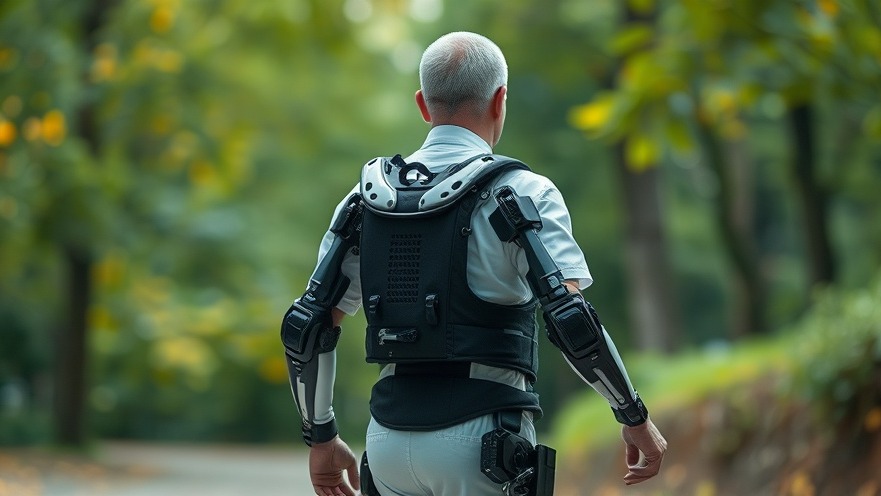
How Exoskeletons Are Transforming Rehabilitation
In the evolving landscape of rehabilitation medicine, one of the standout innovations is the use of exoskeletons. These mechanical devices not only support movement for patients but also empower them to regain independence, making them an essential tool for healthcare practitioners to consider. Particularly beneficial for those recovering from strokes, tendon injuries, or degenerative conditions, exoskeletons come in various forms fine-tuned for individual patient needs. Recent developments from the Fraunhofer Institute for Machine Tools and Forming Technology (IWU) showcase a game's changing approach with their tailored devices that fit over the hand, allowing for a new avenue in therapy.
The Importance of a Personalized Fit
Traditional therapy tools are often cast aside when they fail to fit appropriately or hinder movement rather than assisting it. This is where exoskeletons rise to the occasion. By employing advanced CAD modeling and 3D printing technologies, the IWU crafts hand exoskeletons that conform closely to individual hand anatomy. The tailored approach is vital as everyone’s hands vary not only in size but also in proportional structure. This kind of customization embodies a shift toward patient-centered care, emphasizing that one size does not fit all, especially in rehabilitation.
3D Printing: A Game-Changer in Exoskeleton Technology
One of the technological marvels at the heart of developing these exoskeletons is 3D printing, specifically through selective laser sintering (SLS). This process enables the creation of complex geometric shapes that are often impossible with traditional manufacturing methods. By taking a 3D scan of a patient's hand, practitioners can create precise models that allow for easy future adjustments. Consequently, any adjustments needed—for instance, modifying the device for varying grip strength—can be seamlessly executed using the CAD model.
Drive System: Engineering Precision for Patients
The effectiveness of exoskeletons also heavily depends on their drive systems. The emergence of lightweight materials and innovative drive mechanics brings significant advancements to patient care, particularly for vulnerable populations such as children and elderly patients. The inclusion of a bidirectional stepper motor and actuated wires made from shape memory alloys, as developed in IWU, allows exponential control and adaptability. This design ensures that the device maintains optimal performance without adding undue weight, making it accessible for various patients.
Enhancing Patient Experience with Exoskeletons
Patient experience remains at the forefront of successful rehabilitation initiatives. These exoskeletons facilitate controlled movements, which can significantly enhance the quality of performance during rehabilitation exercises. As patients learn to manage their hand movements more effectively, they may find it not only easier to complete daily tasks but also more gratifying—fueling a positive feedback loop essential for motivation in recovery.
Future Trends in Exoskeleton Technology
With advancements in AI and machine learning, the future of exoskeleton technology looks promising. Imagine a scenario where devices learn and adapt to a patient’s movements over time, automatically adjusting the support they provide based on needs. Such innovations would not only streamline rehabilitation processes but could also cut down on long-term healthcare costs by accelerating patient independence.
What This Means for Healthcare Practitioners
For healthcare practitioners, staying informed about advancements like exoskeleton technology is crucial. Awareness of these innovations can prompt earlier interventions and encourage the exploration of diverse rehabilitation methodologies, potentially leading to improved patient outcomes. The understanding of both the mechanical workings and the therapeutic implications of these devices enhances your toolbox and broadens your practice's capability.
As developments continue to unfold, now is the time to familiarize yourself with these technologies. Integrating cutting-edge solutions like exoskeletons can profoundly impact rehabilitation practices, ultimately enhancing patients' quality of life. For healthcare practitioners committed to offering innovative care solutions, the integration of advanced technology into practice is an imperative step towards achieving excellence in patient healing.
 Add Row
Add Row  Add
Add 




Write A Comment